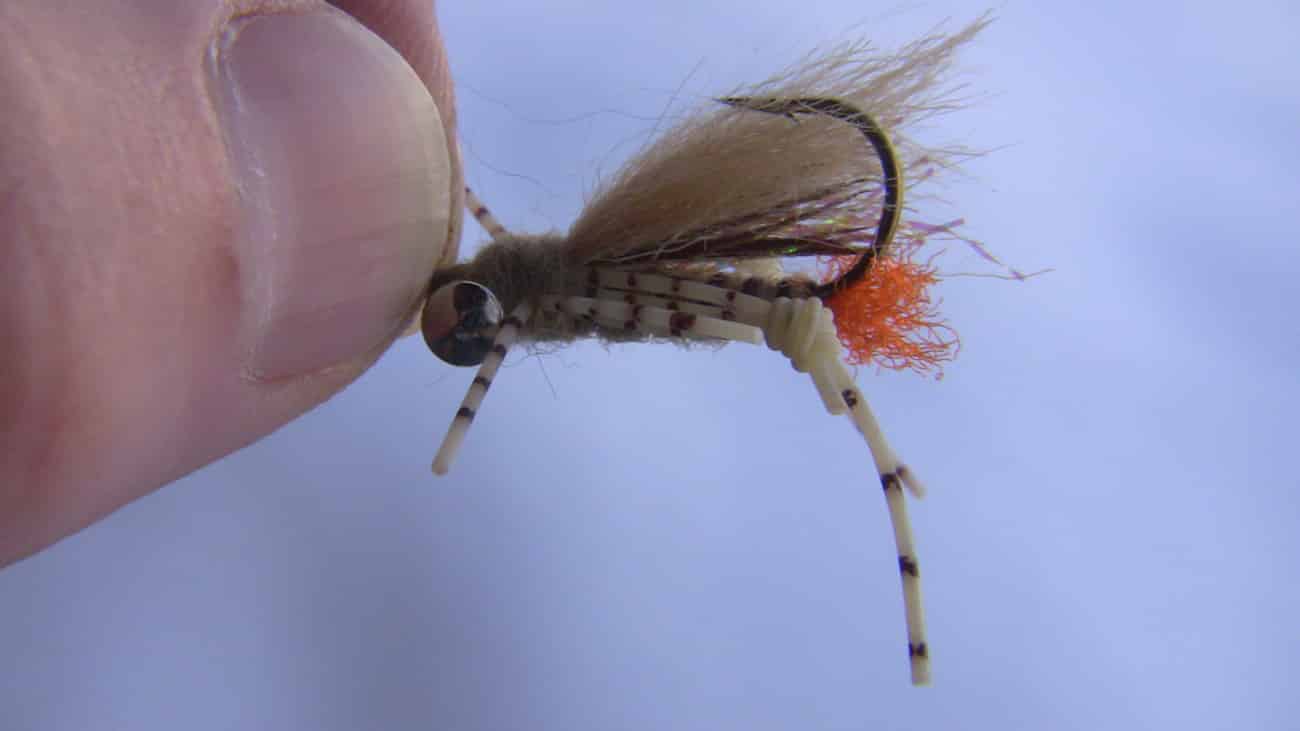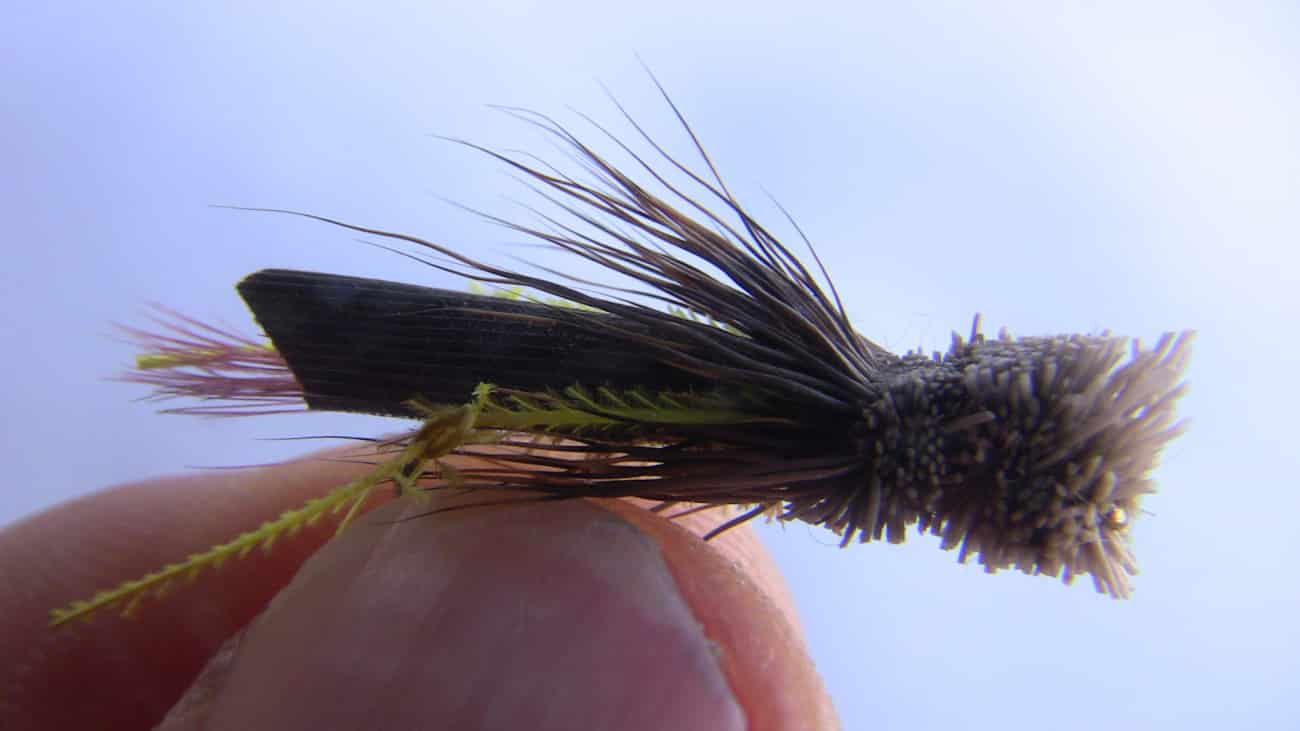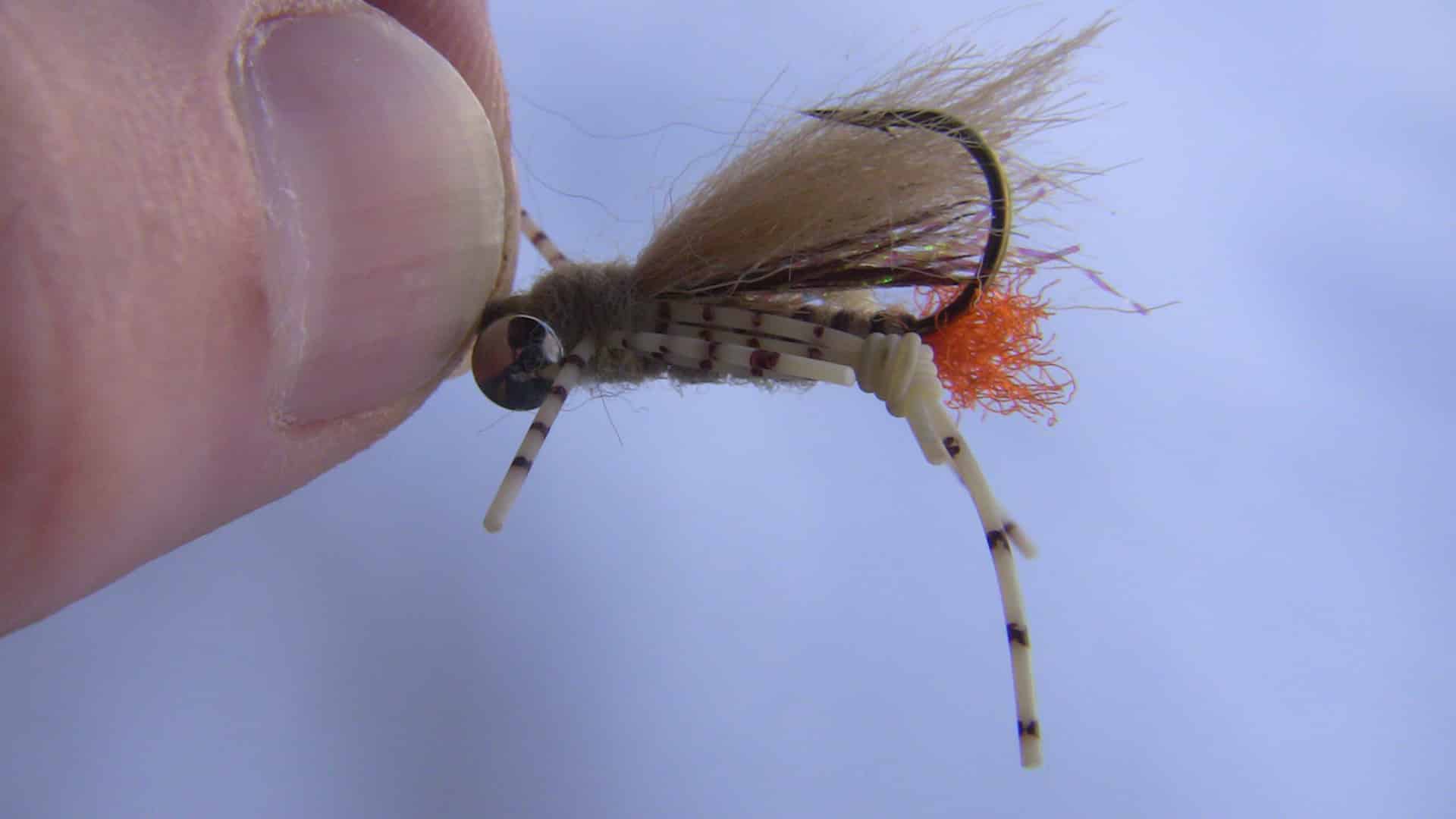In the heat of the summer, there are few trout fly patterns more fun to fish than hoppers. They will become a major food source for trout (especially on windy days). If you have ever tossed a hopper into the river to watch it be eaten by a fish, you have probably noticed that often times they will sink once they begin to struggle. I would go out on a limb and say more hoppers are eaten by trout under water than they are on the surface.
Personally I doubt on any trout stream in the US, there are more than a handful of people drifting sinking hopper fly patterns. If you want to experience pure delight on the river, drifting a weighted – sinking hopper under a floating hopper pattern via the hopper dropper rig is the way to go.

There are so many ways to tie this fly that I won’t really get into that. This particular version is tied on a jig head hook with a set of fairly heavy dumb bell eyes. This extra heavy version is great for floating under a standard nymph rig using an indicator. It is too much weight for most floating hoppers to hold up while fishing the hopper dropper technique.
If you want to tie some great looking variations, I would recommend tying up a few Dave’s hoppers with lead wrapped around the hook prior to tying the fly. This way you will be able to keep your new secret weapons in disguise from your friends and people who might peek into your fly box (evil laugh).

The Dave’s hopper featured above has a lead wrapped inner body. This will cause the fly to sink just a little ways under the surface and it won’t have too much effect on your floating fly drifting above it. I cannot begin to tell you just how effective this fly is during the right time of year when hoppers are at their peak.
When tying a version of the sinking Dave’s hopper, you won’t want to add too much lead. The goal is to cause it to barely sink below the surface, without having too much drag on the fly that is floating it.
Summary
If you have never used sinking hopper patterns, you have been missing the boat. I strongly recommend you gather some fly tying materials and put some together well in advance, because you don’t want to have to tie any flies during the peak of the season.

